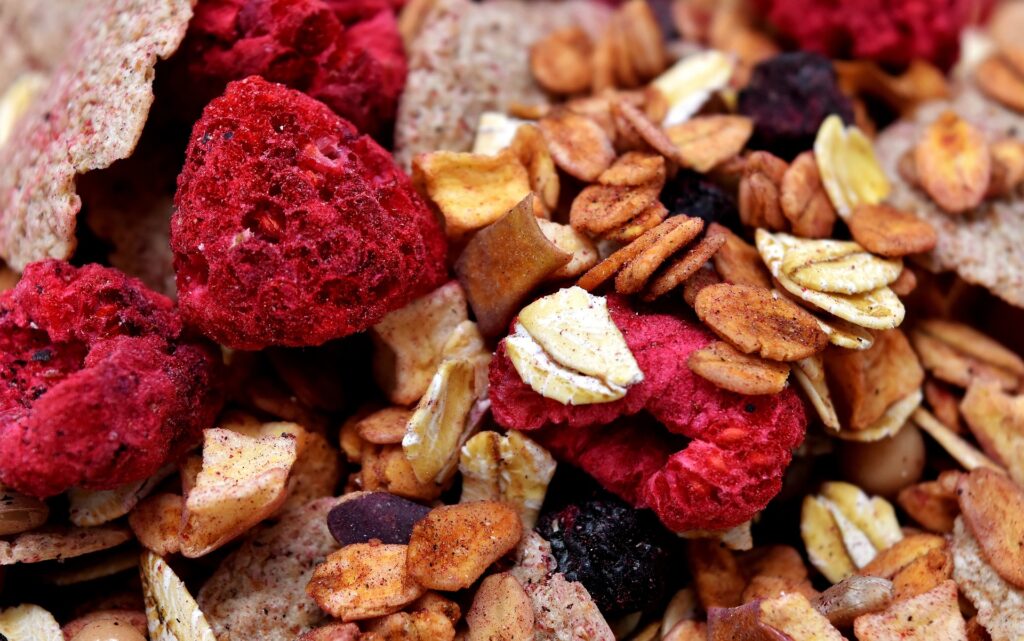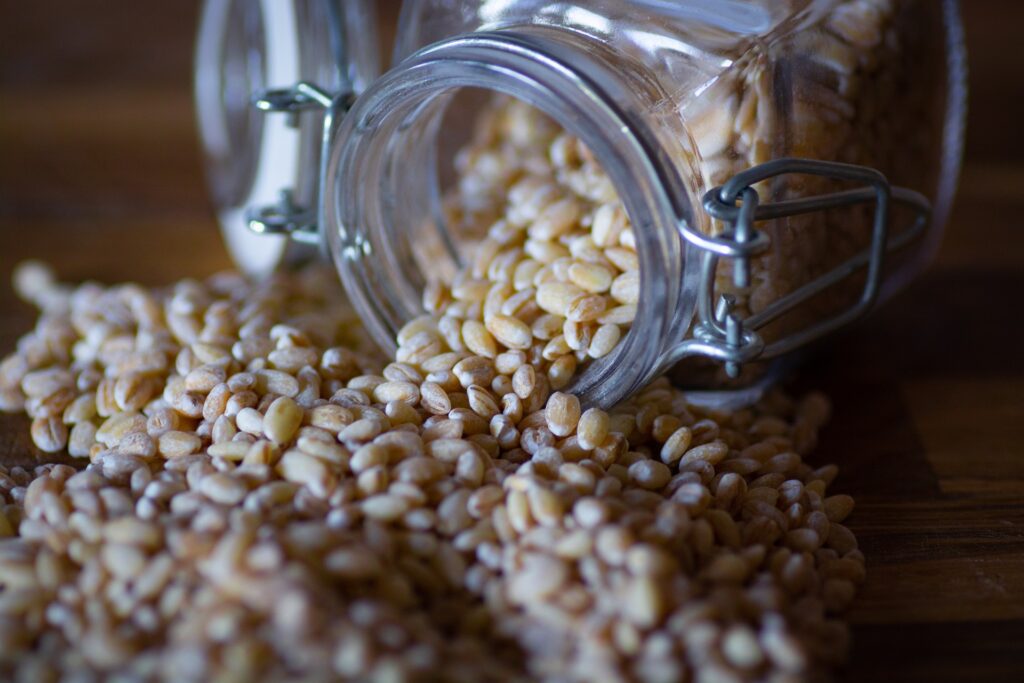A Fresh Look at Nutritious Breakfasts
If you’ve been paying attention to health trends lately, you’ve probably noticed that ancient grains are having a moment. These nutrient-rich grains, which have been part of human diets for thousands of years, are making a big comeback, especially in cereals. Why? People are craving natural, less processed alternatives to the sugar-packed cereals we’re used to seeing on supermarket shelves. Grains like quinoa, farro, and millet not only offer superior nutrition but are also more sustainable options. In this post, we’ll explore how ancient grains in a healthy cereal are gaining popularity, what makes them so special, and why you should consider adding them to your breakfast routine.

What Are Ancient Grains, Anyway?
Ancient grains are exactly what they sound like—grains that have been around for centuries, remaining mostly unchanged. Unlike modern grains like wheat or corn, which have been bred for higher yields or easier processing, ancient grains have retained their original nutritional benefits. Some of the most popular ancient grains include quinoa, amaranth, millet, spelt, and sorghum.
Thanks to features like ancient grain in a healthy cereal , these grains are becoming more common in today’s kitchens, offering a healthy and delicious alternative for breakfast.

Table of Contents
Why Ancient Grains Are Great in Cereals
1. They’re Packed with Nutrients
Ancient grains are nutritional powerhouses. Take quinoa, for example—it’s a complete protein, meaning it contains all nine essential amino acids. This is pretty rare for plant-based foods. Including grains like these in your cereal, as mentioned in the ancient grain in a healthy cereal article, can give your morning meal a much-needed nutrient boost.
2. They’re High in Fiber
Fiber is essential for keeping your digestive system happy. Ancient grains are rich in it, which helps regulate digestion, keeps your cholesterol in check, and even helps control blood sugar. Starting your day with a cereal made from ancient grains means you’re setting yourself up for better digestion. In fact, according to ancient grain in a healthy cereal, grains like farro and spelt are perfect for those wanting to increase their fiber intake.
3. Gluten-Free Options Are Available
If you’re gluten-sensitive or have celiac disease, ancient grains have you covered. Many of these grains, like quinoa, millet, and amaranth, are naturally gluten-free. The growing interest in gluten-free diets has contributed to the rising popularity of ancient grain in a healthy cereal NYT, as these cereals provide a nutritious alternative to traditional wheat-based products.
How Do Ancient Grain Cereals Stack Up Against Traditional Ones?
Let’s be honest: many traditional cereals are full of processed grains, sugar, and artificial additives. They don’t offer much in terms of nutrition. On the flip side, cereals made with ancient grains bring a lot more to the table:
- More protein
- Less sugar
- Higher fiber content
- More vitamins and minerals
This trend toward cleaner, healthier ingredients is why you’re seeing more brands promoting ancient grain in a healthy cereal NYT. Consumers are increasingly looking for whole, natural foods that align with their health goals.
4. They Have a Lower Glycemic Index
Ancient grains usually have a lower glycemic index than processed grains, meaning they don’t cause big spikes in blood sugar. This makes them a great option for people managing diabetes or those who want to avoid that mid-morning energy crash. As highlighted by ancient grain in a healthy cereal, these low-glycemic foods help keep your energy levels steady throughout the day.
Which Ancient Grains Should You Look for in Cereals?
1. Quinoa
This grain is famous for being high in protein and naturally gluten-free. It’s often featured in ancient grain in a healthy cereal recommendations because it adds both nutrition and a nice crunch to cereals. It’s also a complete protein, making it perfect for a filling, satisfying breakfast.

2. Amaranth
Another protein-rich grain often found in healthy cereals, amaranth is packed with iron, magnesium, and calcium. It’s also gluten-free, and its nutty flavor makes it a great addition to your morning routine. It’s frequently highlighted in ancient grain in a healthy cereal articles for its long-lasting energy benefits.

3. Millet
Millet is another gluten-free grain that’s loaded with fiber and antioxidants. It’s small, round, and adds a delightful texture to cereals. It’s frequently mentioned in ancient grain in a healthy cereal features for its versatility and impressive health benefits.

4. Farro
Farro is an ancient wheat grain that’s chewy, fiber-rich, and perfect for slow digestion. While it does contain gluten, it’s easier on the digestive system compared to modern wheat. Articles like ancient grain in a healthy cereal often recommend farro-based cereals for those who want to balance carbs with protein and fiber.
5. Spelt
Spelt, another ancient wheat, is easier to digest than modern varieties and contains more protein and minerals. It’s a favorite in many ancient grain in a healthy cereal NYT reviews due to its nutritional punch and mild flavor.

The Sustainability Factor
One big reason people are embracing cereals made with ancient grains is that they’re often more sustainable. These grains generally require fewer resources—like water and fertilizers—than modern crops. Grains like quinoa and millet, for example, grow well in tough conditions, needing less irrigation and adapting better to climate changes. This eco-friendly edge makes ancient grain in a healthy cereal options not just good for your body, but for the planet as well.
Simple Ways to Add Ancient Grains to Your Breakfast
Making ancient grain in a healthy cereal part of your morning routine doesn’t have to be complicated. Here are a few easy ways to do it:
1. Start with a Hot Cereal
Cook up grains like quinoa, farro, or millet with some water or milk for a hot, nutritious breakfast. Add fruits, nuts, or a drizzle of honey to take it up a notch.
2. Try Multi-Grain Blends
Many cereals now combine a variety of ancient grains, giving you a diverse range of nutrients in one bowl. Look for blends that include quinoa, amaranth, and millet—these are often recommended in ancient grain in a healthy cereal for their unique health benefits.
3. Sprinkle It on Yogurt
Ancient grain cereals also work great as a crunchy topping for yogurt. This combo is perfect if you’re looking to boost your protein intake while adding some extra texture to your meal.
Why Ancient Grains Are Here to Stay
More and more people are moving away from sugary, processed cereals in favor of options that provide real nutrition. The focus on whole, natural foods has sparked a renewed interest in grains that are packed with nutrients and fiber. Articles like ancient grain in a healthy cereal have helped raise awareness about these grains, leading to a greater variety of products hitting store shelves.
Conclusion
The resurgence of ancient grain in a healthy cereal NYT has opened the door to more nutritious, whole-food breakfast options. These grains offer incredible health benefits, from better digestion to more sustainable farming practices. Whether you’re trying to manage your blood sugar, support your gut health, or simply start your day with a balanced meal, ancient grains are a smart and delicious choice. Next time you’re shopping for cereal, reach for something that includes ancient grains—your body will thank you.